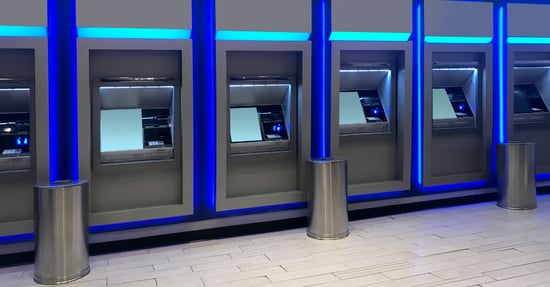Platform Revolution: 4th Generation of Core Banking

The 4th generation of core banking has arrived, bringing with it a platform revolution that is reshaping the banking industry. This transformation heralds the transition from legacy systems to next-generation platforms, catalyzing the sector's embracement of innovation and driving the strategic adoption of solutions like TellerCentral.
As the financial sector continues to evolve rapidly, core banking systems are experiencing transformative changes. The fourth generation of core banking is revolutionizing the way banks operate, providing a flexible, efficient, and technologically advanced platform that addresses the needs of modern banking.

The 4th Generation of Core Banking: Platform Revolution
The fourth generation of core banking systems marks a significant departure from traditional, monolithic platforms. Instead of relying on rigid, legacy technologies, these new platforms leverage cloud-native technologies, microservices, and advanced analytics. This revolution is not just about updating technology; it's about rethinking the entire banking ecosystem to be more customer-centric, agile, and scalable.
The Transition from Legacy Systems to 4th Generation Core Banking Platforms
Transitioning from legacy core banking systems to fourth-generation platforms is a complex but necessary process. Legacy systems, often built decades ago, are not equipped to handle the demands of today's digital-first world. They are inflexible, costly to maintain, and slow to adapt to new market trends. The digital transformation into Core Banking 4.0 involves migrating to platforms that are modular, scalable, and designed to integrate seamlessly with emerging technologies.
What is Core Banking 4.0?
Core Banking 4.0 is an advanced technological framework that enables banks to deliver superior financial services through innovation and integration. It offers a holistic approach, combining cutting-edge technologies to create seamless, scalable, and adaptive banking platforms.
Breaking Legacy Barriers: Overcomes Silos and Rigidity of Traditional Platforms:
Core Banking 4.0 is the term used to describe the latest generation of core banking systems that overcome the limitations of traditional platforms. Unlike legacy systems that operate in silos and have rigid structures, Core Banking 4.0 utilizes a modular architecture. This allows for greater interoperability and flexibility, enabling banks to offer personalized services and adapt quickly to market changes. By breaking down these barriers, banks can innovate faster and deliver a better customer experience.
Enhanced Flexibility: Adapts to Dynamic Customer Needs and Behaviors:
One of the standout features of Core Banking 4.0 is its enhanced flexibility. The modular design allows banks to rapidly deploy new products and services, adapting to the dynamic needs and behaviors of customers. Whether it’s integrating with third-party financial services or launching a new mobile app feature, Core Banking 4.0 provides the agility needed to stay competitive in a fast-paced market.
Cost Efficiency: Reduces Maintenance Costs:
Cost efficiency is a significant advantage of the fourth generation of core banking systems. By moving to cloud-native platforms and utilizing microservices, banks can significantly reduce the overhead associated with maintaining legacy systems. This shift not only lowers maintenance costs but also accelerates the go-to-market (GTM) process for new products and services. Banks can allocate resources more effectively, focusing on innovation rather than upkeep.
APIs & Advanced Tech: Utilizes Machine Learning for Improved Security and Interoperability:
Core Banking 4.0 leverages advanced technologies such as APIs and machine learning to enhance security and interoperability. APIs enable seamless integration with external systems and fintech partners, fostering an open banking ecosystem. Machine learning algorithms can analyze vast amounts of data to detect fraudulent activities, predict customer needs, and provide personalized recommendations, thereby improving security and customer satisfaction.
Future-Ready: Ensures the Bank's Readiness for Upcoming Digital Trends and Demands:
The future of banking is digital, and Core Banking 4.0 ensures that banks are ready for upcoming trends and demands. By adopting a flexible, scalable, and technologically advanced platform, banks can stay ahead of the curve. This future-ready approach means banks are well-positioned to embrace innovations such as blockchain, artificial intelligence, and digital currencies, ensuring they remain competitive and relevant in a rapidly evolving landscape.
Core Banking 4.0 is coming
The fourth generation of core banking systems represents a significant leap forward for the financial industry. By overcoming the limitations of legacy systems and embracing modern technologies, banks can achieve greater flexibility, cost efficiency, and security. Core Banking 4.0 is not just about keeping up with the times; it's about setting the stage for the future of banking.
Related Posts

What is UV Printing? UV Curable Inks for Packaging
Ultraviolet, or UV printing is an advanced digital technology that cures specially designed inks using UV light. This process creates sleek, vibrant designs that dry instantly,..

Here's How to Beat Upcoming Postage Rate Increases
In 2024, a notable increase in postage costs became a reality. With postage increases expected to occur multiple times a year, it's important to be prepared for what's coming.

What is MICR Toner? A Guide for Check Printing
What is MICR? MICR stands for Magentic Ink Character Recognition, and it plays a critical role in check printing. If you're printing checks for your business, you should always be..



Leave a Reply